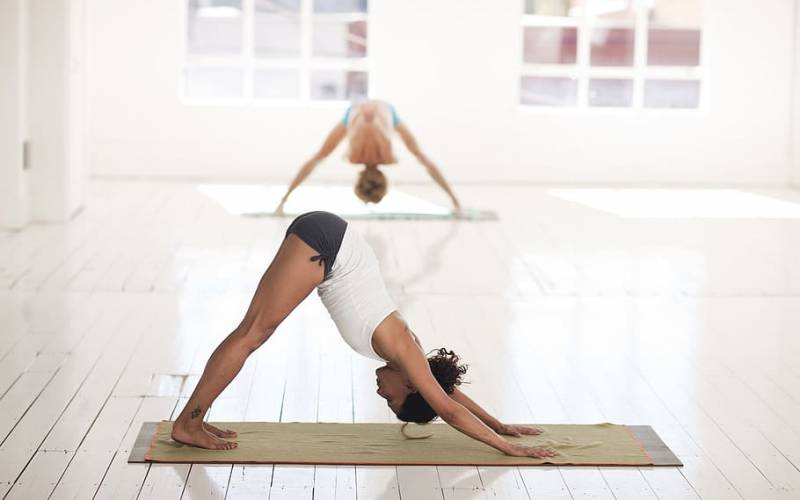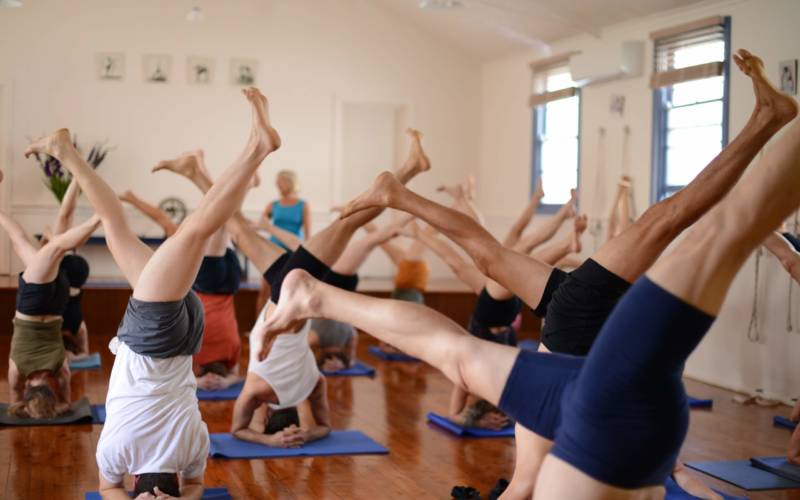A guide to using Yoga Vastu for Iyengar yoga online practice
Yoga Vastu was initially and primarily conceived as an adjunct to class participation.
Our intention was to offer a Yoga website that would help students learn to practice, using a range of different approaches: from classical sequencing in a fuller class format to sessions using more specific target areas (shoulders, lower back e.g.) as well as the Pranayama and Restorative sessions. We also added, on request, some shorter practices like a few “mini sequences to break up the working day”, and some shorter sequences to help you “get out the door” or to end the day in a more balanced state of mind and body.
In truth, the possibilities are endless.
The main aim here was, and is, to encourage the student of Yoga to practice and to learn more.
As you come to the site you will see something called “courses”, and the purpose of those should be reasonably self-explanatory in their various titles. They are intended to be practiced in sequence, or at least as a group of sessions. They can work well individually but have added benefit when seen as a whole.
There are also a wide range of video sessions and practice sequences which can be filtered according to your level of experience (see more below). This should allow you to better target the material which is most relevant to your Yoga background and capacity.
Practice at home with online yoga classes
These are online classes, and therefore you as a student will need to be more selective in how you follow the sessions. In a face-to-face class the teacher can guide you individually and that, of course, has certain advantages.
A guided online class, on the other hand, has the benefit of allowing you to gain experience of your own practice and to have your own timing and your own environment. Working with video guidance, but on your own, facilitates learning to practice independently, and more often. This is really also the aim of face to face Yoga. Classes aim to teach the student important aspects of the asana where you can be corrected and guided to observe yourself more clearly as you continue to practice. And they are motivators. They can help you see yourself afresh, from the teacher’s perspective. A teacher can correct and encourage.
Getting used to home practice
Home practice involves finding the time and the place and the motivation to pull out your mat and this initially may take longer to get used to. It does however bring you the reward of independence, of being able to tailor the type of sequence you do exactly to your own needs of the day. You become self-sufficient. Studio classes, face to face, will then serve to further boost your understanding and they do this best when you also learn to do at least a little Yoga at home.
Dealing with injuries
The videos do not always mention specifically when not to do something, for example, an inversion. The basic classes do not include many inversions and most are well suited to the average new practitioner. However, if there are inversions or other poses that you are unsure of, there is always an alternative that can be used if you are either not familiar with that Asana or if you have a problem area that is not suited to that pose.
There are also particular sequences for necks and shoulders, lower backs, hips, and knees. Follow these first if those are your challenge points. And please ask us via email or in class if you are still unsure.
Adjusting your yoga for your circumstances
Whilst many of our videos are aimed at students with some experience with Iyengar yoga, some practitioners may still be relatively new to Yoga and not yet confident in making clear choices of how to practice.
Below are a few things to keep in mind as you go through the various sequences:
Iyengar yoga during menstruation
General guidelines for women on their menstrual cycle
As a general rule, follow these points:
- No inversions
- No closed twists
- No unsupported backbends
- No abdominals
Use the following guidelines instead:
- Quieter forward bends to be done with support
- Restorative sessions where you give your body restful yet mood-balancing poses to do.
- Some supported Standing Poses which are done with the whole body against the wall or with the back foot to the wall and avoiding any of the twisting versions. These are helpful to release the abdomen and allow you to move a little more, though appropriately. It is also beneficial when doing forward bending standing poses to keep the spine “concave”, and the abdomen and lower back will be more kept more restful by using block supports for your hands.
Whichever sequence you choose, be mindful of the general guideline given above. Give your body over for a few days to sequences that will benefit you and not aggravate any menstrual symptoms such as fatigue, cramping, back pain, headache, or low mood.
What level are you?
It is hard to exactly specify an experience level as practitioners will vary in capacity, age, background, and body requirements regardless of their Yoga experience. But those with more of a Yoga background will be familiar with adapting to their needs.
If you are newer to Iyengar Yoga, have a look for specific categories that you can refer to when choosing which videos to follow.
Iyengar yoga for beginners
We have a range of videos and content for people that are very new to Iyengar yoga. Many will not have props or equipment.
Recommended course for very new students:
Iyengar yoga for beginners with no props
This is a basic course of six sessions for students who may not have much extra equipment yet. This is the one you should start with and perhaps go through and repeat this course a few times.
We then have two extra courses for your practice:
Iyengar yoga foundations for beginners
Iyengar Yoga Foundations for Beginners – five sessions
This will be specific to students who have perhaps done a face-to-face course with Iyengar yoga before and have some equipment at home (or can improvise). This is a basic course of five sessions labelled Iyengar Yoga Foundations for Beginners. This is the one you should work with once you have a few basic props. There are more detailed explanations here shown on different students as they go through the sequences.
This will further your understanding of the basic foundations, and can also be repeated a few times. The poses will become clearer with a little more exposure and practice.
Strengthening your yoga foundations
Strengthening your yoga foundations – five sessions
This is a follow up of a further five sessions to build up your foundations. You will be starting with Headstand (Sirsasana) and to Shoulderstand (Sarvangasana) and a few other poses you can expand on to bring you into the next level.
There are also shorter sessions and sessions for particular problem areas. These can also be looked into once you are familiar with some of the foundation poses.
Iyengar yoga for students with 1-2 years experience
At physical studios, this is sometimes referred to as Level 1 or Level 1/2 or General Level
Here it is assumed that you have already followed the basic Beginners course and that you have already been introduced to the foundation postures. This next category allows you to take on a wider range of postures, still building on your previous experience. You can have a look at the course called Strengthening Your Foundations – the five-part course mentioned above. It is a good link to follow as you come to this next level.
It is not necessary to do the inversions if you have limited experience and confidence in these poses, or if you have neck issues which preclude full weight-bearing onto the neck and shoulders. There are always alternatives and/or preparatory poses you can do instead. There will be clear alternatives to these poses and it is important that you not go into something you are not yet confident with. It is advisable to modify and then ask the advice of a teacher.
Iyengar yoga for students with 3 or more years experience
At physical studios classes may be referred to as Level 3 or, for those with a good many years of Yoga experience, Advanced. These are labelled either Experienced or Advanced level classes. Many students will also benefit from going through the General level sessions as well, as these may contain particular techniques that are good to review.
These sessions are intended for those of you who are regular practitioners of Iyengar yoga, and who have at least 4 to 5 years of good solid practice experience behind you. You may also be a teacher or a teacher trainee and you would be expecting here to learn more about Yoga practice in all its intricacies. You would be ready to challenge yourself, but able to use discernment in how you approach new poses. You would be able to adapt poses competently based on previous experience.
You can go to the recorded full classes labelled General Level or Advanced when you are wanting to do a longer, more “regular class” type of session.
Approaching online classes
For all levels, it is important to be interested in learning and to be sensible at the same time. Guruji used to tell us that we should be “bold with caution”. If in doubt wait to get clarity and seek advice.
Finally, we at Yoga Vastu are sincerely interested in your progression in Yoga learning and practice. We have received enormous benefits ourselves from practicing Iyengar Yoga over many years and even many decades. The aim of Yoga Vastu is to help us communicate what we have learned along the way and to share our experiences with you.








